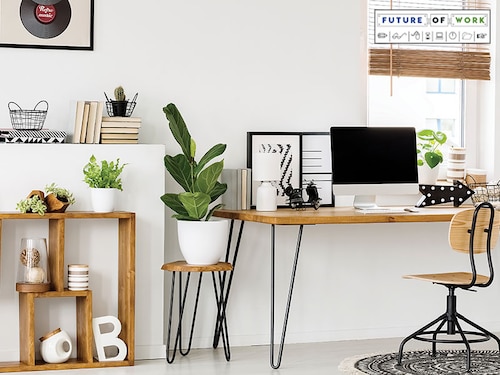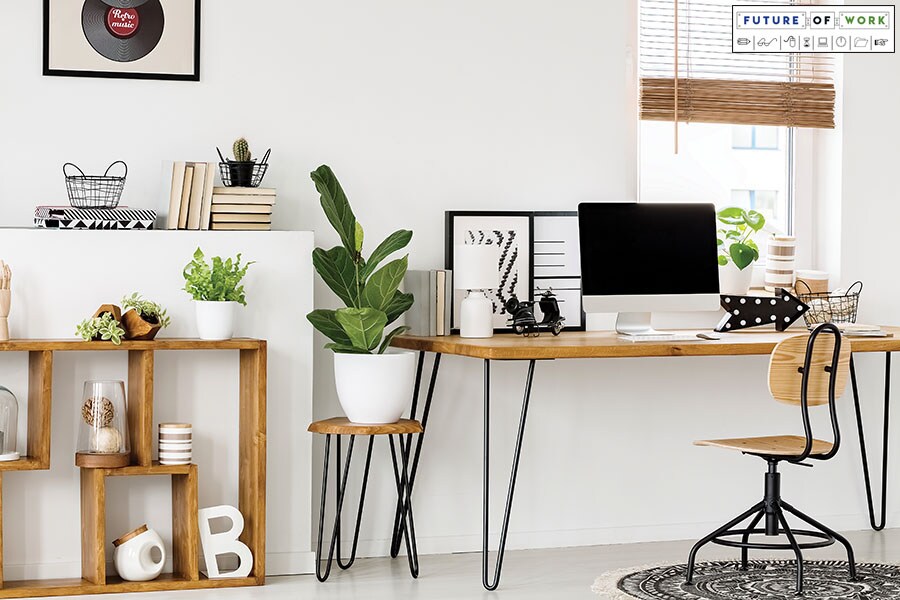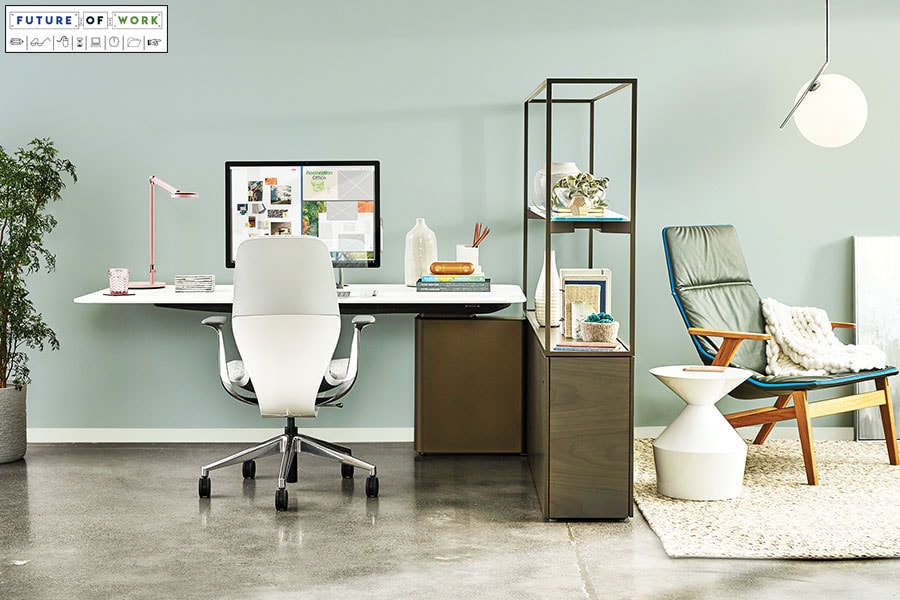Future workplaces: Who moved my office?
Workplaces as we know them may well cease to exist in the future. But what are the alternatives?


 Slowly, work will move out of designated areas to spaces where the employees want Image: ShutterstockThere was a time, about 15 years ago, when Wi-Fi was made available for free on MG Road in Pune on weekend evenings, when the entire stretch of the thoroughfare was closed to vehicular traffic and converted into a pedestrian-only zone. Amid the carnival-esque atmosphere that would descend on the road, complete with acrobats on stilts and candyfloss on pushcarts, there would be small huddles of young men and women, sitting with laptops in Irani cafes, or on the steps in front of shops, poring excitedly into their screens and sharing notes.
Slowly, work will move out of designated areas to spaces where the employees want Image: ShutterstockThere was a time, about 15 years ago, when Wi-Fi was made available for free on MG Road in Pune on weekend evenings, when the entire stretch of the thoroughfare was closed to vehicular traffic and converted into a pedestrian-only zone. Amid the carnival-esque atmosphere that would descend on the road, complete with acrobats on stilts and candyfloss on pushcarts, there would be small huddles of young men and women, sitting with laptops in Irani cafes, or on the steps in front of shops, poring excitedly into their screens and sharing notes.
We, in our office, with boxy and cranky Intel 486s, wondered: Is this what the future looks like? Would this be the norm if Wi-Fi was to become widely available? Would we be able to sit in cafes and work, instead of cramped offices? Can we actually carry laptops around, instead of having to chain them to internet cables?
To some extent, these questions have since been answered, while raising many more in their wake. Fifteen years ago, we (us, the lay people) had not foreseen the ubiquity of a device called the smartphone. It would change forever the way in which we not only live our lives, but also fundamentally perceive it. Those entering the workforce today have never known a life where they cannot get whatever they want, thanks to that tangle of plastic, glass and silicon in their hands. Added to this are technological advancements that will add new dimensions to connectivity, transportation, data security, surveillance and monitoring, office design and utilities.
The workspace of the future could well be what we can only try to imagine.
Not open, not closed
Offices have gone through the phase when people first sat in glass-and-wood (followed by glass-and-steel) rooms, after which was the phase when they sat in a large, cavernous room with shoulder-high, partitioned cubicles. While the former was meant to club employees according to hierarchy and departments, it also resulted in them working in silos. The latter—the open office—was meant to resolve the problems of the former, but ended up creating chaotic workplaces where concentrating on work became difficult.
The office of the future will have separate spaces to collaborate, unwind, conduct focussed meetings, and to ideate. Each will be designed according to specific requirements, and, instead of designated desks to sit at, employees will sit wherever their work takes them.
“Employers will have to become less regimented,” says Anil Sain Mathur, COO of Godrej’s Interio Division. “Employees will increasing say, ‘Let me work where I want to, how I want to, when I want to’. What will matter is the work getting done.” Mathur predicts the rise of the “social office” that will see a lot more interaction among colleagues. “Corner offices will no longer be these large, expansive rooms.” A CEO and an intern could be sharing the same sofa, for all you know.
But the dream of everyone ‘working from home’ that the advent of broadband had ignited in the minds of earlier generations is probably never really going to materialise. “Confidential information will always be confidential,” says Rawal. “Offices are supervised and monitored spaces, where information is protected. This information runs the risk of being compromised if people are working from home.”
The millennial factor
Praveen Rawal, managing director, Steelcase India and Southeast Asia, says that in the next 10 to 20 years, in countries like India, China and Mexico, 70 to 80 percent of the workforce will be millennials. “They can work in a focussed manner in a cafeteria, something that Gen X could never imagine,” he says. “This will increasingly blur the lines between a residential and a commercial set-up of offices.” Image: Steelcase The lifestyles and aspirations of millennials will also mean that their expectations from their jobs and careers will not be the same as those of employees today. “The traditional power structures for controlling employees will undergo a change,” says Prasenjit Bhattacharya, CEO, Great Place to Work, India. “In the past, 1 percent of managers exercised power over 99 percent of people. Many millennials are not interested in giving the best years of their life to an organisation to be in the top 1 percent powerful managers.”
Image: Steelcase The lifestyles and aspirations of millennials will also mean that their expectations from their jobs and careers will not be the same as those of employees today. “The traditional power structures for controlling employees will undergo a change,” says Prasenjit Bhattacharya, CEO, Great Place to Work, India. “In the past, 1 percent of managers exercised power over 99 percent of people. Many millennials are not interested in giving the best years of their life to an organisation to be in the top 1 percent powerful managers.”
Bhattacharya adds that social media, and the availability of personal profiles on various platforms, will bring about more transparency regarding not just the people being hired, but also about those who are doing the hiring.
Hub, and spoke
While on one hand companies will consolidate their real estate, and dramatically shrink the number of offices they have, there will also be the parallel rise of co-working spaces. Rawal of Steelcase gives the example of a company in Manila, the Philippines, which dramatically cut down the number of offices it had—from 65 to just one.
“The shared economy is making many things affordable,” says Mathur of Godrej Interio. “Co-working spaces make it possible for startups to have a good office address and a brand culture, instead of working out of their bedrooms.” Larger companies are also likely to tell their employees to go to their closest space to work rather than travel 20 km to the office.
Mathur even predicts the rise of community hubs, where people from similar and allied industries will work together, leading to a greater exchange of ideas.
The future is freelance
Last October, in its report ‘Freelancing in America: 2017’, Upwork and Freelancers Union estimated that 36 percent of the US workforce comprise freelancers. The report predicted that, by 2017, a majority of the workforce of 86.5 million people will be freelancers.
Factors such as the freedom to choose their projects, their place and time of work were the biggest reasons for people choosing this form of employment. Technological advancements that have improved connectivity, distributed storage facilities and capacities, and enabled collaborative platforms mean workers can be remotely located, even in different time zones.
According to a PwC report called ‘Workforce of the future: The competing forces shaping 2030’, 60 percent of respondents to a survey think ‘few people will have stable, long-term employment in the future’. However, it might also be equally true that few people will even be looking for stable, long-term employment.
Brain enhancements, anyone?
‘Learning on the job’, as people have done forever, may not remain an adequate way to learn new skills, adapt to and employ new technology, or even mentally realign to changing employment scenarios. If the pace at which technology is currently changing is anything to go by, things will get only more frenetic in the future. Added to this will be the ever-increasing threat of artificial intelligence-based machines that will learn faster and better than humans, putting more and more jobs at risk.
According to the PwC report, even while 73 percent of the people it surveyed believed that technology can never replace the human mind, 70 percent of the respondents said they would consider using treatments to enhance their brain and body if this improved employment prospects in the future.
First Published: Aug 09, 2018, 06:07
Subscribe Now